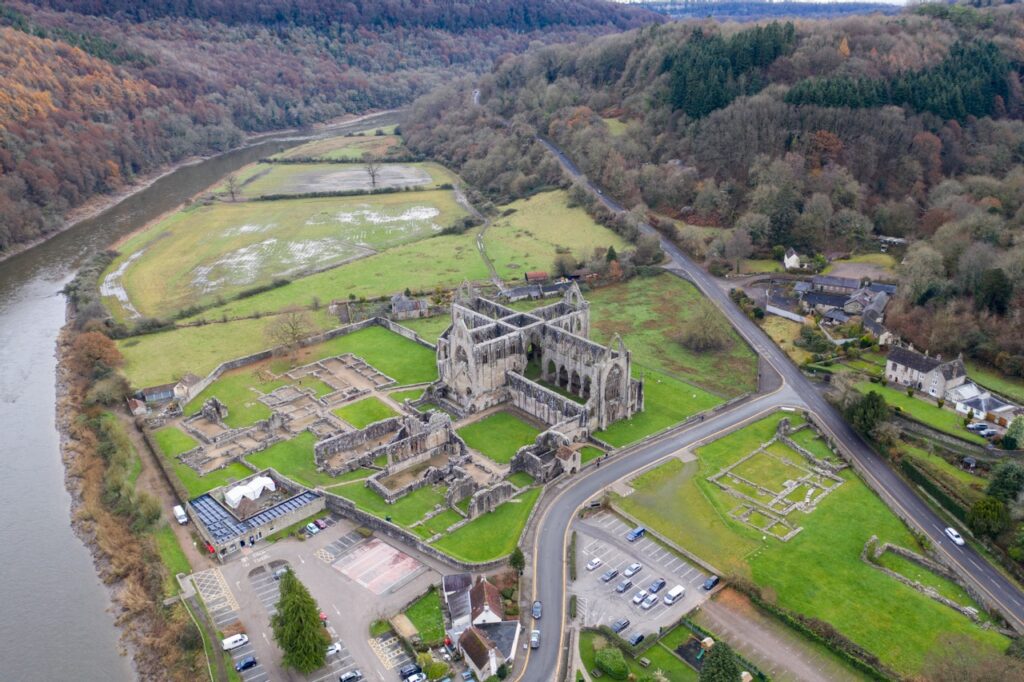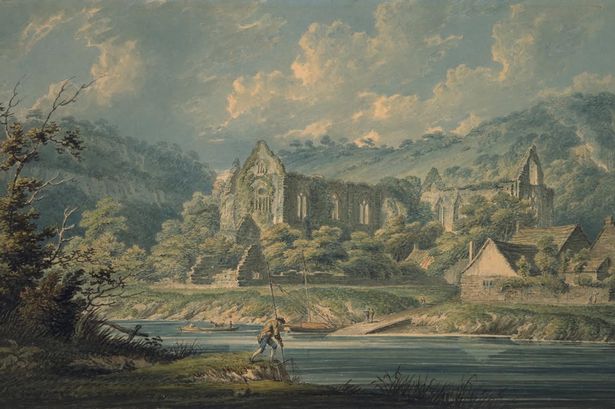Tintern Abbey

TINTERN ABBEY is a national icon — still standing in roofless splendour on the banks of the River Wye nearly 500 years since its tragic fall from grace.
It was founded in 1131 by Cistercian monks, who were happy to make do with timber buildings at first. Abbot Henry, a reformed robber, was better known for his habit of crying at the altar than for his architectural ambitions.
A simple stone church and cloisters came later. But then, thanks to the patronage of wealthy Marcher lords, the white-robed monks began to think bigger.
In 1269 they began to build a new abbey church and didn’t stop until they’d created one of the masterpieces of British Gothic architecture. The great west front with its seven-lancet window and the soaring arches of the nave still take the breath away.
So grateful were the monks to their powerful patron Roger Bigod that they were still handing out alms on his behalf in 1535. But by then King Henry VIII’s English Reformation was well underway.

Only a year later Tintern surrendered in the first round of the dissolution of the monasteries — and the great abbey began slowly to turn into a majestic ruin.
The abbey ruins lay forgotten until the 18th Century, but Tintern was about to experience a second heyday – this time as a major tourist destination. A popular engraving by the Buck brothers, published in 1732, started the ball rolling. It was followed by the Reverend William Gilpin’s bestselling account of his Wye River voyage in 1770.
He described Tintern as “the most beautiful” scene of all – although he felt there was room for improvement. “A number of gable-ends hurt the eye with their regularity and disgust it by the vulgarity of their shape,” he wrote, suggesting a mallet might come in handy.
Nevertheless, the ivy-covered ruins of Tintern were caught up in a surge of romantic interest in the ‘sublime’ and the ‘picturesque’. Travellers kept out of Europe by the French Revolution and Napoleonic Wars were roaming the wild landscapes of Britain instead.
They flocked to the Wye Valley, arriving on small boats laden with picnic hampers. In 1792 they were joined by none other than JMW Turner – barely 17 years of age and full of expectation on his first proper trip to Wales.
The pencil sketches he made at Tintern provided the raw material for the magnificent watercolours exhibited at the Royal Academy in 1794-95.

By then, the poet William Wordsworth – young, troubled and alone – had already seen Tintern for himself. In July 1798 he returned in happier times with his sister Dorothy and wrote his famous poem Lines Composed a Few Miles Above Tintern Abbey.
By now the abbey, beneath Wordsworth’s ‘steep and lofty cliffs’ on the banks of his ‘sylvan Wye’, wasn’t only a romantic vision. It was a bustling tourist attraction surrounded by beggars and would-be guides loudly touting for business.
Things are quieter now. But the great walls and arches in their setting of wild natural beauty haven’t lost their magic. They remain a vision of the sublime.
(source: Cadw)
Back to HOME PAGE